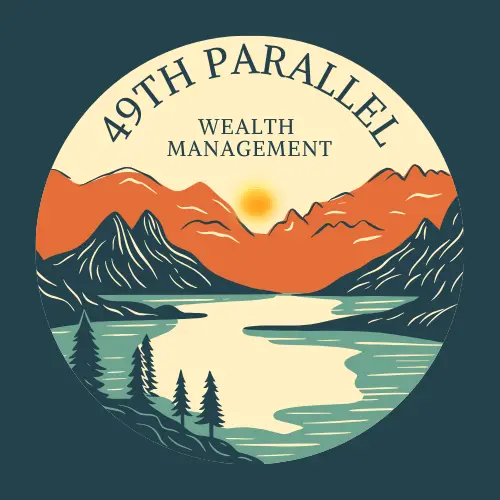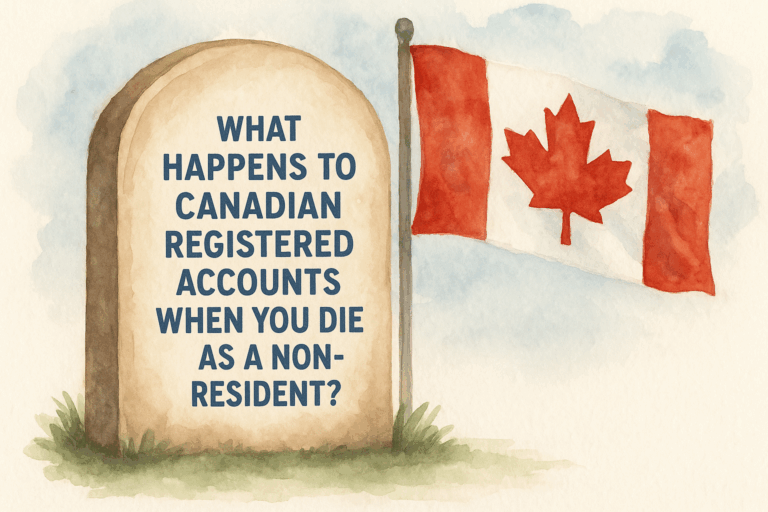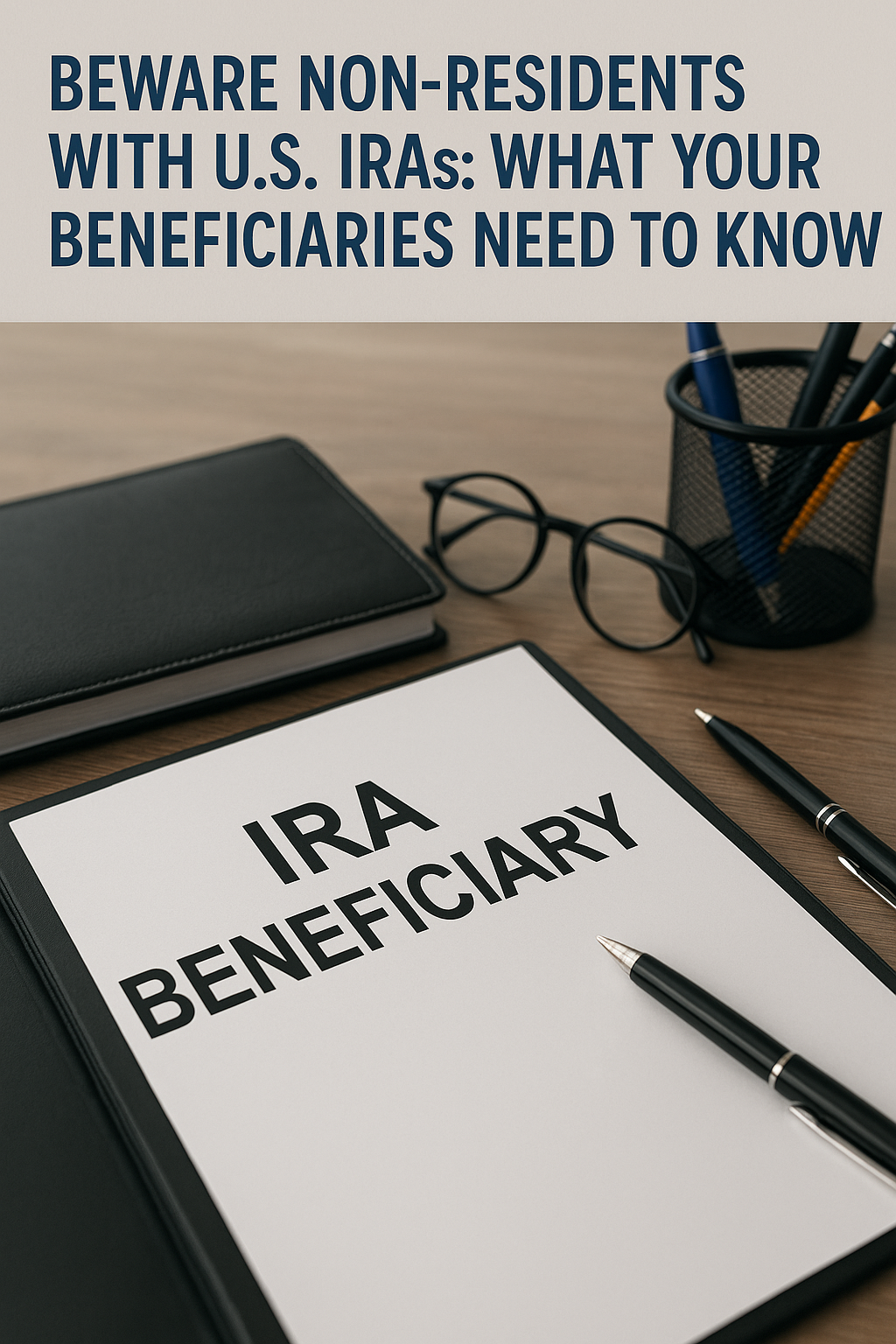 alt="Retirement Distributions" class="wp-image-1621"/>
alt="Retirement Distributions" class="wp-image-1621"/>Most large U.S. employers offer either a 401(k), 403(b), or similar retirement plan to their employees. For the self-employed or small businesses, options include an Individual or Group 401(k), Defined Benefit Plan, SEP-IRA, SIMPLE IRA, or Traditional IRA.
Upon retirement, these accounts often roll over into a Rollover IRA. These retirement plans provide tax-deductible contributions and deferred investment income, but distributions are fully taxable in both Canada and the U.S. as ordinary income.
The primary goal of these retirement accounts is simple: contribute while you’re employed and earning more, let your investments grow, then draw distributions during retirement when your income – and tax bracket – are typically lower.
Key Considerations for Required Minimum Distributions (RMDs)
The SECURE Act of 2019, effective since 2020, brought changes to the RMD rules, raising the starting age for RMDs from 70½ to 72. RMD age is now 73 and scheduled to go to 75 in 2033. You have until April 1 of the year after you turn age 73 to take your first RMD.
If you wait until age 74 to take your first RMD, you’ll need to take two RMDs in the same year, which may push you into a higher tax bracket for that year. If you’re 73 or older and managing RMDs, timing your distributions can maximize your retirement income while minimizing taxes.
Here are some strategies to help you make the most out of your RMDs:
1. Timing Your Distribution
Assuming a positive market environment, taking your distribution at the end of the year allows you to defer income longer. While a larger IRA means higher future RMDs, it’s generally better to have more growth, even if it means paying more tax.
2. Quarterly vs. Annual Distributions
Taking distributions quarterly allows for dollar-cost averaging, which can reduce the impact of market volatility. However, frequent distributions can lead to higher transaction costs, so we typically recommend annual or semi-annual distributions to keep costs in check.
Additionally, if you don’t have an adequate emergency fund, you may need to liquidate securities during a downturn, which could impact your investment returns.
3. Buy Low, Sell High
A basic investment principle is to “buy low, sell high.” That is easier said than done because nobody knows what will happen with markets in the short-term. Distributions taken when the market is up minimize the shares you need to sell to meet your RMD.
While perfect market timing is impossible, avoid taking distributions during downturns. If the market has been performing well for an extended period, it may be wise to consider taking a portion of your RMD at that time.
4. Consider the Exchange Rate
If you’re converting your RMD to Canadian Dollars (CAD), pay attention to the exchange rate. If you see the exchange rate spike early in the year, it may make sense to take a portion, or all of your distribution. However, weigh this currency gain against the market value of your portfolio to ensure an optimal balance.
5. Distributions Across Borders
If you hold assets in both Canada and the U.S. and need more than your RMD for lifestyle expenses, evaluate the exchange rate before deciding which currency to use.
When rates favor CAD, for instance, it’s typically more advantageous to pull from your USD accounts, and vice versa when rates are closer to par.
6. Maintain a Cash Reserve
For clients actively contributing to their portfolios, a 3-month cash reserve allows for maximum portfolio growth. For retirees taking distributions, keeping 6-12 months worth of expenses in cash enables more flexible timing, reducing the need to take RMDs during downturns.
Most of that should be kept in a high-yield cash equivalent. Also keep in mind that credit cards and home equity lines can be used in emergency situations. Market recoveries vary in duration, so avoiding forced distributions during a market bottom can provide more stability for your long-term plan.
7. Balance Through Rebalancing

Rebalancing is the process of buying and selling securities to maintain the target allocation of a portfolio. When securities increase in value enough, they are sold to take some of the profits off of the table and to buy into securities that are somewhat cheaper. Rebalancing is typically done at the same time as cash is created for future distributions.
This process will naturally favor taking distributions from fixed income or other non-equity holdings when equity markets are down, and will generally result in selling equities and triggering capital gains when markets are up.
For example, during downturns, a greater share of distributions might come from fixed income holdings because they become an outsized portion of your portfolio as your equity value drops. While withdrawing only from fixed income assets during market drops is an option, it can increase your portfolio’s risk if practiced consistently over the long-term.
It is usually not advisable to ever commit to taking all distributions from one asset class because with a globally diversified portfolio there will usually be some equity holdings that are up while most others may be down.
Global catastrophes like COVID can cause equity correlations to be close to one because the whole globe shut down for a while, but that is not the norm with global market cycles. The point of diversification is to reduce correlation levels and improve risk adjusted returns. While nothing is fool proof, diversification works over the long-term.
8. Applying These Principles to Roth IRAs
While Roth IRAs don’t have taxable distributions, these principles still apply for the timing of withdrawals. Careful timing, asset allocation, and prudent rebalancing can enhance portfolio longevity and performance.
Navigating RMDs and Cross-Border Complexities
Distribution timing and strategy can greatly impact the longevity of your retirement savings. Setting your RMDs on autopilot may not provide optimal results.
At 49th Parallel Wealth Management, we specialize in working with clients all across Canada and the United States, particularly those with a connection to both countries. If you are crossing the 49th Parallel, our team is well-equipped to help you navigate RMD timing and all aspects of cross-border retirement planning.
Cross border retirees have a lot of moving parts, we can help you arrange them in a way that gives you peace of mind and frees you to live the life you want. From the Desert to the Tundra, we are your cross-border retirement experts!




